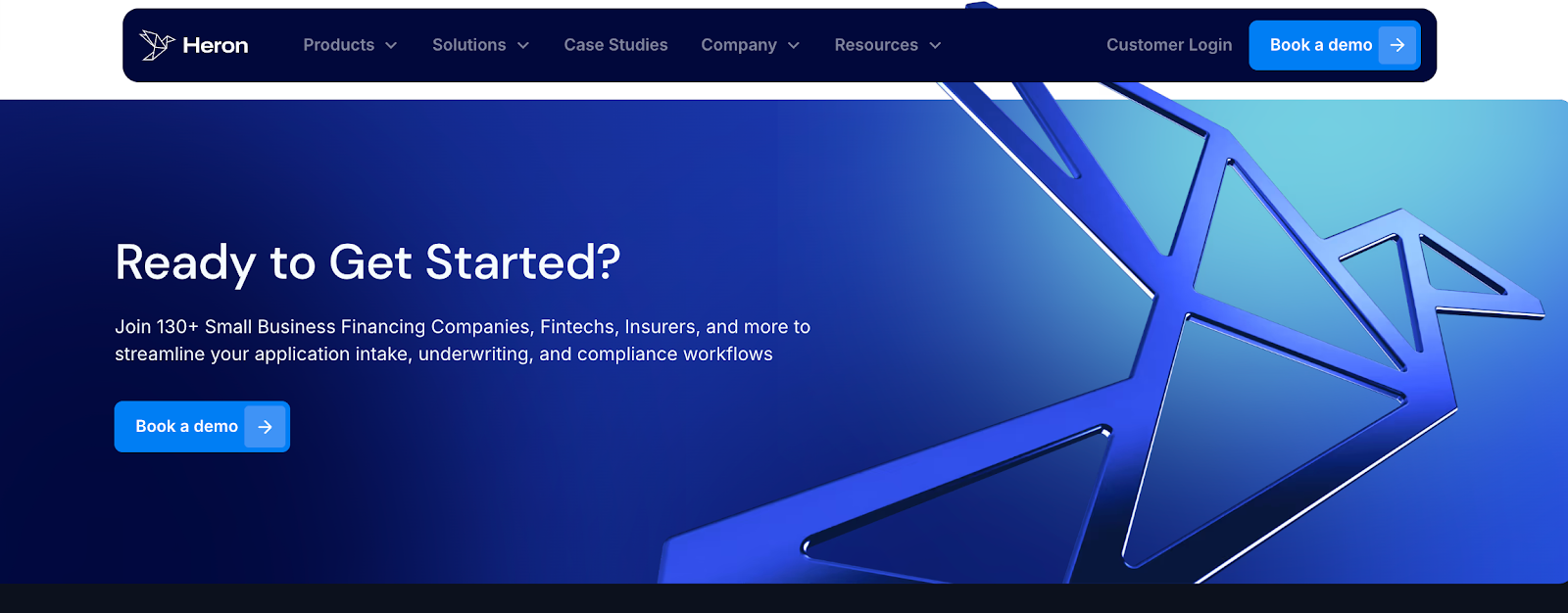Have you ever wondered how big-time funders figure out if a business can really handle a loan? The answer often comes down to cash flow lending analysis.
In this article, we’ll break down what cash flow lending analysis means, why funders use it, and how it helps small businesses access financing.
You’ll see how it works, what makes it different from traditional methods, and how automation is changing the process.
What Is Cash Flow Lending Analysis?
Cash flow lending analysis is how a funder checks if someone can repay a loan they're applying for. It looks at money moving in and out of accounts over time, intending to confirm the borrower's ability to make each payment on time without stress.
A funder reviews bank activity, statements, and trends. This cash flow analysis studies where money comes from and where it goes.
It focuses on the strength, timing, and predictability of the company’s cash flow. It also reviews cash from daily operations, investing cash flow, and cash from financing.
Profit alone is not enough. Net income can look strong while cash is tight after bills and income taxes. Cash tells you what is in the account to use today.
Funders look for patterns to project future inflows. They weigh borrower risk by asking a few clear questions. Is there steady cash each month? Are big outflows well timed? Is there enough buffer for slow periods?
The answers to these questions show current liquidity and the overall financial health of the borrower.
How Is Cash Flow Lending Analysis Used In SMB Finance?
In small and medium-sized business (SMB) finance, cash flow lending analysis works a bit differently for industries like merchant cash advance (MCA) providers and SMB credit brokers.
Funders in these spaces often make decisions quickly, sometimes within a single day. To do this, they focus on the company’s cash flow and how money moves in and out of its accounts.
For MCA funders, the review centers on daily deposits, withdrawals, and patterns that show real revenue. They pay close attention to existing debt repayment schedules and whether there is enough positive cash flow to cover new advances without creating added strain.
If income dips, they want to know how the business handles periods of negative cash flow. This gives them a view of financial health and the company’s overall financial position.
Brokers, on the other hand, connect businesses to the right funders. They take applications, gather business bank statements, and look at borrower risk before sending files to multiple funders.
Brokers use cash flow analysis to highlight strong months of net income, smooth over weaker ones, and explain how the funding request will support financial stability.
Cash Flow Underwriting vs. Traditional Underwriting: What Makes Them Different?
When businesses apply for funding, the way a funder reviews submissions depends on the underwriting model they use. Two common approaches are cash flow underwriting and traditional underwriting.
While both aim to understand a business's ability to manage debt obligations, they take very different paths to processing loans for businesses.
Cash Flow-Focused Underwriting
Cash flow underwriting focuses on how much cash your business actually brings in and sends out each month. A funder looks at business bank transactions, revenue patterns, and operating expenses to see if a company can handle debt repayment without strain.
Instead of just reviewing traditional credit data, they dig into the cash generated from your operations, check liquidity, and look at trends to project future stability.
This helps them make informed lending decisions based on your real activity, not just your past records.
Traditional Underwriting
Traditional underwriting, on the other hand, leans heavily on credit history, credit scores, collateral, and financial statements.
Financial institutions often look at tax returns and non-cash expenses when deciding if your business qualifies.
While this method has worked for years, it can leave out businesses that are young, have thin credit files, or rely more on real-time revenue than on established credit lines.
How They Differ
The biggest difference comes down to what funders prioritize. Traditional underwriting looks backward, while cash flow underwriting looks at the present and future.
With traditional models, the approval often depends on how strong the credit history and collateral look.
If someone has limited credit scores or relies heavily on personal guarantees, their chances can drop even if your cash flow is steady.
Cash flow underwriting flips that approach. Funders focus on real-time bank transactions and the company’s ability to generate enough cash to cover both operating expenses and financial obligations.
They evaluate how consistent a business's cash inflows are, how it manages outflows, and whether the business model supports sustainable growth. This gives SMBs more access to financing, especially if they lack collateral but can prove stable revenue.
Another key difference is flexibility. Traditional underwriting tends to apply set rules, while cash flow underwriting allows funders to adapt repayment schedules around a business cycle.
For example, if the business earns more in one season, payments may adjust to match that rhythm. This adaptability often reduces credit risk for funders while making repayment more manageable for businesses.
Can Cash Flow Lending Analysis Be Automated?
Yes, cash flow analysis can be automated. Modern tools powered by AI, machine learning, and robotic process automation now handle most of the heavy lifting.
For funders, automation speeds up the underwriting process, improves decision-making, and makes it easier to handle more loan applications without needing more credit analysts.
Unlike traditional reviews that vary widely depending on documents and manual checks, automation uses structured data and alternative data sources to show the company’s ability to repay.
Below are some ways automation makes cash flow analysis work in practice.
Automated Document Intake & Bank Scrubbing
Automation tools powered by AI-driven OCR and intelligent document processing systems go far beyond simply reading PDFs.
They pull cash flow data from bank records, financial statements, cash flow statements, income reports, and balance sheets to give funders an accurate picture of a business’s financial strength.
Some funders also rely on shared inboxes. Staff often download files one by one, enter data into Salesforce or PAS systems, and flag incomplete applications.
They also process 30 or more ISO submissions a day, with underwriters usually spending 15 minutes or more on analyzing business bank statements alone. They calculate revenue, remove non-revenue deposits, categorize merchants, and search for potential risks.
With automation, applications move straight into the CRM, documents are parsed instantly, and routing happens without hold-ups. Roles that were once tied to manual uploads can shift toward revenue-generating tasks, giving the business more value without extra headcount.
Automation can also cut time spent on manual reviews of ISO submissions down by 98%, shrinking a 15-minute task to just seconds. It delivers consistent fraud detection, accurate revenue calculations, and frees underwriters to focus on actual decision-making.
Turning Raw Data Into Business Intelligence
Scrubbing numbers and verifying bank statements and other financial documents is only the first step. Raw cash flow data on its own lacks the context you need for confident decisions. That’s why enrichment is key.
Automated platforms enhance parsed data with third-party APIs, internal logic, and industry databases to turn simple extractions into actionable insights.
For example, Heron is an automation tool built for MCA funders and brokers. With its enrichment feature, you can connect to over 50 different data sources, including NAICS databases, address validation tools, and credit scoring APIs.
You can also build custom logic that fits your internal rules, making it easier to match loan applications against your criteria.
Merchant identification, transaction categorization, and risk scoring bring clarity to the company’s ability to manage financial obligations.
Credit analysts no longer need to spend hours on manual lookups or worry about stale information.
Instead, the system keeps data fresh by updating business registrations, verifying addresses, and pulling from credit bureaus.
Take the Paperwork Out of Cash Flow Lending Analysis with Heron

If your underwriting team is tired of drowning in paperwork, Heron helps you move past it. Your team gets clean, structured information in seconds, sent straight into your CRM systems. That means the focus is on making real financing decisions rather than spending hours copying data.
For funders, cash flow lending analysis becomes far more effective when the numbers are clear and reliable.
Heron pushes financial data directly into your CRM so you can review several ratios, track revenue trends, and see where the money is going without opening a single PDF. The result is faster approvals, fewer errors, and more time to focus on deals that matter.
You don’t need extra headcount or offshore processors to manage growing volume. Heron automates intake, enriches data, and updates your system of record instantly.
This gives you the tools to make smarter decisions, close more deals, and help more small businesses get the financing they need.
FAQs About Cash Flow Lending Analysis
How do credit analysts traditionally calculate cash flow?
Credit analysts usually look at net income and then adjust it by adding back non-cash expenses like depreciation while factoring in changes in working capital. This helps them see how much real cash is available for a company to operate, invest, or pay off debt.
What is the difference between positive cash flow and negative cash flow?
Positive cash flow means a business brings in more money than it spends, which allows it to cover expenses and grow. Negative cash flow shows the opposite, where more money goes out than comes in, making it harder to pay bills and maintain operations.
How to check if cash flow is correct?
To check if cash flow is correct, compare it against bank statements and accounting records to confirm accuracy. It’s also helpful to review each line item to see if the numbers match real transactions and ensure nothing important has been missed.
What are the three types of cash flows?
The three types of cash flows are operating, investing, and financing. Operating looks at day-to-day income and expenses, investing tracks money spent on long-term assets or received from selling them, and financing shows borrowing or repayments, which is key for small businesses.
Take the Paperwork Out of Cash Flow Lending Analysis with Heron


